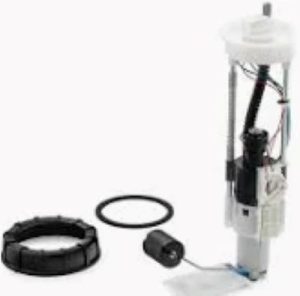However, fuel pump design can significantly impact its energy consumption.View more from the May 2014 issue Fuel flow — measured in liters per hour (LPH), is a function of the type and size of your pump. An average fuel pump can deliver between 100 and 150 LPH, but a high-performance unitcan reach up to 255LPH if you want the best for more powerful engines. The wrong-sized pump, either too large or too small for a given application, can also be inefficient – an undersized pump will not comply with high fuel demands and will cause the engine performance to drop approximately 15%; meanwhile an oversized pump delivers more than the necessary quantity of fuel thus wasting energy.
Efficiency is also affected by the internal mechanisms of the pump. Electric fuel pumps use a motor to keep the pressure of fuel between 40- 60 PSI. A pump motor designed correctly will draw less current, generally between 4 to 8 amps based on the vehicle. As the current draw is less, there would be less pressure on the vehicle electrical system and hence better efficiency. This can cause voltage drops that, in turn, reduce fuel pressure by as much as 20 percent and hurts engine performance.

Inlet and outlet sizes are other design variables in a fuel pump, which have to correspond with the system in order not to create bottlenecks or leaks. Even if the pump itself is capable of higher output, mismatched sizes reduce flow rates and thereby hinder fuel delivery efficiency. A 10mm oulet pump will be more effective in systems that are using the correct diameter, meaning flow and pressure as well.
Design also affects heat dissipation for temperature management. Electric fuel pumps are usually inside the fuel tank, and the pump runs immersed in gasoline, which helps to cool it while in use. A pump that overheats thanks to inadequate cooling design may lose 30 percent of its efficiency, and it wouldn't last beyond 100,000 miles, compared with a well-cooled pump rated at 150,000 miles. A better-cooled pump will last longer and move cooler, since it can stay at operating temperature in heavy loads.
One more part of the design with lots to do with efficiency is its fuel contamination resistance. Proper pumps have filters and internal elements that do not degrade from water or fuel contamination. Last year alone, some 150,000 cars had fuel pump failures due to degradation, destroying internal components and lowering pump output up to 25%. The latest designs are augmented with superior filters that prevent the internal state of extraction, keeping efficiency intact for a longer duration.
If you would like more information on how a Fuel Pump can help affect its effectiveness, head on over to this resource: Fuel Pump.